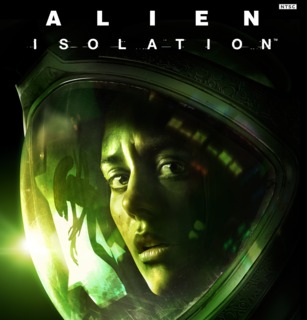Innovation is the key to entrepreneurial success, which again allows strategizing into the vast expanse of the unknown for untapped markets. But do it the opposite way: vastly expand upon burrowed innovation to then be overtaken by the very rivals you pretended to outsmart, and you'll likely fail. An aggressive Alien species? Not as much a problem as part of the solution as it permits to justifiably abandon a remote space station gotten too unprofitable to maintain, with its remaining personnel, and without any accountability. The biggest shareholders of both Seegson and Weyland-Yutani won't probably ever put a foot deep enough into space to experience its risks in vivo, but “small fry” Amanda Ripley does, as did her mother Ellen fifteen years ago, and so do we, stealthily and steadfastly, determined to survive.
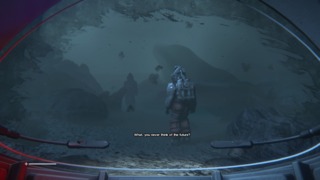
The year is 2137 and Ripley is working as space engineer in the same region where her mother's starship Nostromo disappeared, when finally its flight recorder is located by the crew of the Anesidora and delivered to Sevastopol Station, a free space port owned by Seegson Corporation, now decommissioned. Anesidora's captain Henry Marlow expected the Nostromo's black box to fetch a good price for being property of Weyland-Yutani and the more so as they also tried to trace whose former distress signal, but alas, he spread also an Alien organism that hatched in his facehugged wife brought aboard for treatment. Christopher Samuels, lifelike synthetic executive of Weyland-Yutani, the buyer out of Sevastopol, invites Ripley junior in order to her to get closure on her mother's disappearance—and us to get close to the catastrophe's neuralgic zone: an entire Alien hive in the reactor core, below the Station's central controlling system APPOLLO now running on Weyland-Yutani protocols that paradoxically aim to protect it. APPOLLO is also responsible for Seegson's “cost-efficient and reliable” Working Joe androids' turning against its remaining human survivors, despairingly gone rogue, including also the playable character herself. The few persons “Rip” succeeds to interact with—Axel, Dr. Kuhlman, Marlow, Marshal Waits, Samuels, Ricardo, Taylor, Captain Verlaine—tend to be killed shortly afterwards, but at least those contacts permit us to make our way through the decaying Sevastopol, if not the Torrens.
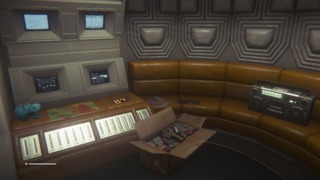
Our heroine's parkour is as solitary as the means are limited and the obstacles numerous; the different tasks as such might be repetitive—find the terminal, retrieve the passcode, use it to get the keycard, use the keycard to lift the crates, reach the door—, yet they permit us to proceed through the story while trying to avoid aliens, androids, and assailants alike. Still, Alien: Isolation is not a game meant to be played in a rush: most of the campaign we are moving while crouched, nervously observing the semi-reliable Motion Tracker, and rushing things doesn't help since just alerting hostiles nearby. Weapons—Stun Baton, Revolver, Shotgun, Flamethrower, Bolt Gun—are acquired consecutively only, in accordance to the script; useful items such as Medikits, EMP mines, Molotov cocktails, Smoke and Pipe bombs, have to be crafted by means of found blueprints and carefully gathered resources.
During the first half of the game it is but stealth that dictates its painful pace, though, as we have neither weapons nor resources enough to cope with all the nearby threats: paranoid pillagers, a rumored monster, and utterly unhelpful Working Joes (“A true Seegson product”). Yet making scarcity a virtue we quickly learn to use the different situations to our favor, for instance, preferring ventilation shafts to circumvent hostile humans in one area the Alien (or Androids) will yet have disposed of on our way back, so no more need to take them out.
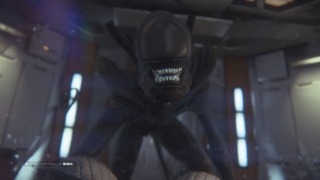
What makes Alien: Isolation withal a good stealth game is that stealth not only is always an option but also an incentive so that even with all crafted items maxed out and sufficient ammo available one does still think economically when using resources and weapon power to rather sneakily avoid enemies in a given situation: they mightn't come very far anyway. On the other hand—and unlike past releases—in Isolation the Alien(s) cannot really be killed so that the otherwise effective flamethrower can only be used to temporarily scare it away. Moreover, the AI seems designed to allow the Alien some gradual “learning” so that a device's repeated use will quickly wear its effect off, and subsequently it may even drag us out of the locker in which we were hiding or get us in one of the narrow vents. While the Alien's growing presence is guaranteed in every later story level, most of its sudden appearances are not really script-bound but usually result from a lack of caution in one's actions, like fast movements (running) and loud noises (shooting) which most likely will attract its silver-grinning attention. On the other hand as long as staying crouched in some dark corner behind or below a desk one might probably remain safe even when it closely goes by (thus disaffirming its visual acuity).
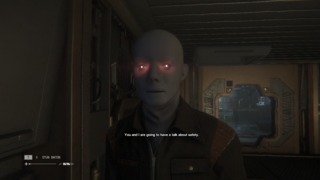
The programmed behavior distinguishes the Alien also from the Androids whose whereabouts are scripted and who are almost impossible to avoid once enraged, so that one might better have one's EMP mine or Bolt Gun ready when crossing certain areas: the creepy Working Joes' emotionless “Let me help you” or “You're becoming hysterical” while going to inescapably strangle our likable character provides certainly some of the scariest moments of all the game.

In any case regularly saving at one of the thoughtfully placed Emergency stations is vital, also in order to conserve the gleaned crafting resources set to be chiefly random in nature and amount. Unlike earlier Alien adaptations, Isolation stars a single Alien rather than swarms of mere shotgun fodder (while from its story it subsequently becomes clear that is it more than one specimen), and SEGA's courage to radically change the genre of its AAA franchise from action shooter to survival stealth game is admirable. Albeit chronologically happening 42 years earlier, Isolation appears technically revamped as compared to Colonial Marines and while far less fast-paced the completely reconfigured gameplay works functionally flawlessly. The motion-captured moves of the raptor-like Alien that alike the AI show the effort put into its design seems to having been modeled after various avian and feline species making it a pretty realistic predator.

Looking back in time the spaceship interieurs, on the other hand, seem inspired by Ridley Scott's first Alien movie (1979) featuring monochrome computer monitors and distorted magnetic video tapes rather than holographic hi-tech. Similarly, most of the overly easy mini-games necessary to hack some of the devices seem to reflect the informatics of an earlier age. Many carefully chosen details—posters, graffiti, books, magazines, personal effects—mark the otherwise same-looking walls and halls with the visible signs of a former, hastily abandoned human presence in the now largely deserted space station, but without being crucial for story progression.
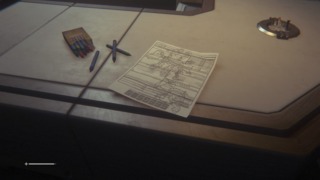
The repetitiousness of Sevastopol's interior architecture—in contrast to the surrounding space, mostly as seen from the spacesuit—as well as of the tasks to perform while sneaking through its maze of corridors is probably Alien: Isolation's biggest minus point though the non-linear levels even the maps of which have to be unlocked always allow for various alternative ways to proceed. Then again the half-burst hallways also contribute to the claustrophic sensation and enduring suspense that characterizes the game: it is interesting that the music while rather absent during large parts, permitting to hear the critical noises, becomes so alarming towards the end of the game, namely in Mission 18. What again might make one ponder over Isolation's duration, since with some of the missions being pretty interminable, at least three could easily have left out without anyone noticing.
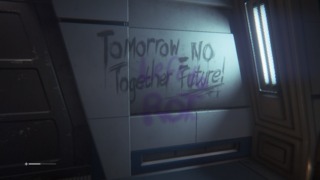
Apart from crafting resources, blueprints, and ID tags of Sevastopol employees gone missing, there are the more than 150 archive logs (personal/shared/audio) accessible via the numerous Personal Terminals that permit, bit by bit, to trace back the becoming of the former Sieg and Son thanks to the advent of Faster Than Light travel in 2034 (“Tomorrow, Together”: a future that is already history in the story's present) up to the burst of the economic Deep Space bubble that determined the fate of Sevastopol and its inhabitants we know (“An Outpost of Progress?”).
The game's end, to be sure, suggests that history repeats itself in Amanda and as the Credits roll we mean to be hearing Ellen's (Sigourney Weaver) voice: “Ripley, signing off”, the more as the additional “Last Survivor” chapter permits precisely playing as Amanda's mother with the similar objective to set the Emergency Destruct System for the Nostromo and Escape on the Narcissus.
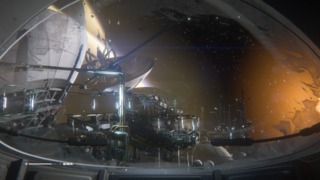
The Survivor mode again provides challenges where one can play short missions as one of the featured characters: Amanda, Ellen, Dallas, Parker, and additionally Ransome (Seegson Executive) and Lingard (Sr. Medical Officer), in order to obtain either the Best Score or the Best Time in the principal plus optional objectives with each of them having a separate online leaderboard.
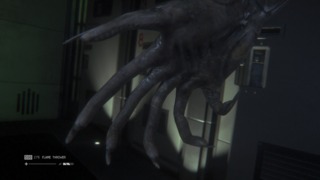
“We're all we have. No one is coming to save us”: One can't really give the Alien Saga for concluded after the open hypersleep ending but Isolation with its solid stealth gameplay and valiant female lead certainly represents a worthy entry in the series.
